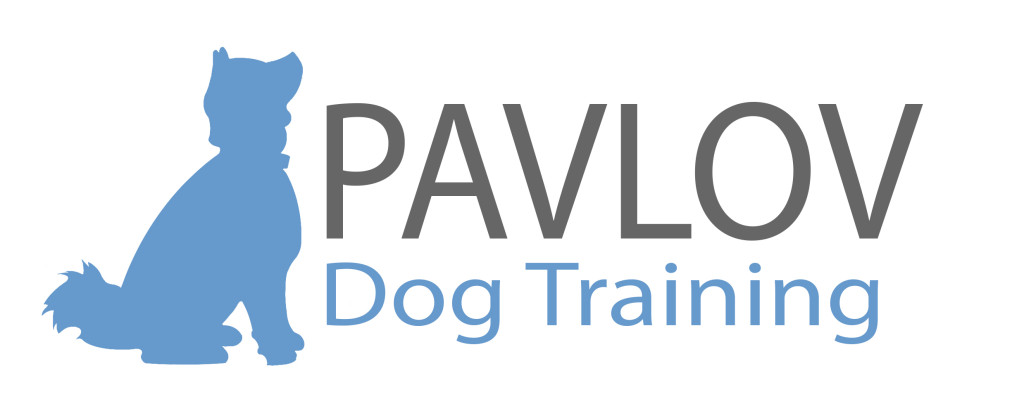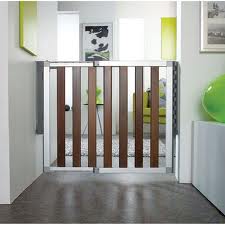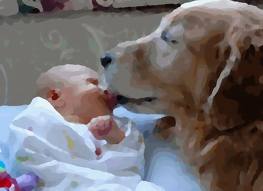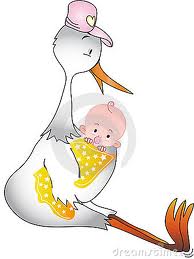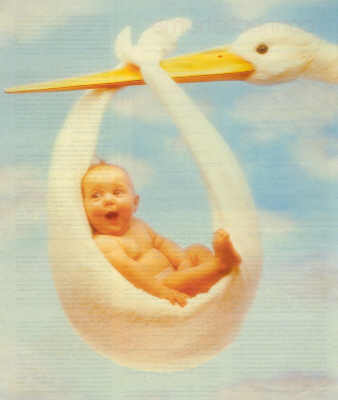 Channel 9 reports a half dozen storks headed due-east over the Rocky Mountains, carrying white linen bundles of mini-humans, fragile, needy, time-intensive and eager to consume whatever energy you once had for your four-legged family members. That is our creative way of saying, several clients are pregnant and they are eager for tips on how to prepare their pets for this new transition, so in an effort to not recreate the wheel, we’ve posted the following article generously distributed by Dumb Friends League. May it be of help!
Channel 9 reports a half dozen storks headed due-east over the Rocky Mountains, carrying white linen bundles of mini-humans, fragile, needy, time-intensive and eager to consume whatever energy you once had for your four-legged family members. That is our creative way of saying, several clients are pregnant and they are eager for tips on how to prepare their pets for this new transition, so in an effort to not recreate the wheel, we’ve posted the following article generously distributed by Dumb Friends League. May it be of help!
PREPARING YOUR PET FOR BABY
Helping your pet adjust to the arrival of a new baby is much like preparing a young child for the same event. Handling your pet’s curiosity, anxiety and increased insistence for attention may seem like an overwhelming task, in addition to preparing yourself and your household for the baby’s arrival. You can, however, help your pet adjust to the big changes ahead with minimal time and effort by making gradual adjustments to your lifestyle before the baby arrives.
Your pet is very sensitive to sounds and smells and uses these special abilities to gather information.
From your pet’s point of view, you and your home have specific identifying smells
that are uniquely yours. There are also certain sounds that your pet considers “normal” for
your household. Even the different tones of voice you use send important signals. Your baby
won’t actually change those scents and sounds that are part of your identity, but the baby’s
arrival will certainly add some new and very different ones. It’s important that you introduce
these new smells and sounds to your pet gradually in a calm and pleasant atmosphere.
 Each time you introduce something new to your pet, make the experience positive. Stroke him, give him treats
Each time you introduce something new to your pet, make the experience positive. Stroke him, give him treats
and praise him for his good behavior when he’s faced with a strange new sound or smell. Relax! If you act anxious,
your pet will be anxious too.
Pets tend to feel alarmed and defensive when faced with unexpected sounds. Take a little time to becomes familiar with the “normal” sounds of your household. Is your home normally quiet, with little background noise? If so, how does your pet react to “extra” sounds like a vacuum clean, a ringing telephone or a whistling teakettle? If your home is normally noisy, your pet may simply sleep through the usual sounds, but how does he react when something unusual occurs? The more strongly your pet reacts to unexpected sounds, the more important it is for you to help him adjust to the “baby sounds” which will become a regular part of your home environment.
Try to recognize what smells re prominent in your home, including your own personal scent. Your home has its own mixture of smells that makes it feel familiar and safe–cleaning products, kitchen odors, even dust. Also, be aware of the products you use that help create your own individual scent, such as soaps, hair care products, toothpaste, deodorant, laundry detergent and cologne. Any new smells should be added gradually, layered on over a period of weeks. Be aware of the effect these changes have on your pet. While you do this, try to keep one part of your home smelling “right” for your pet.
 In order to prepare your pet for the new baby, borrow some baby sounds and smells. Visit a friend’s baby or a nursery and make a tape recording of baby sounds like gurgling, laughing, screaming, crying and kicking. Handle a baby and absorb some of the smells of baby lotion, powder and food. Go directly home and spend some positive relaxed time you your pet. Give him a massage or play with him while the baby smells mingle with your own odors and play the recorded baby sounds.
In order to prepare your pet for the new baby, borrow some baby sounds and smells. Visit a friend’s baby or a nursery and make a tape recording of baby sounds like gurgling, laughing, screaming, crying and kicking. Handle a baby and absorb some of the smells of baby lotion, powder and food. Go directly home and spend some positive relaxed time you your pet. Give him a massage or play with him while the baby smells mingle with your own odors and play the recorded baby sounds.
Start out with the volume turned fairly low and if your pet doesn’t react strongly to the sounds, gradually increase the volume to a normal level. As you play the tape, look at your pet and speak calmly, using your pet’s name. Smile! It adds a special tone to your voice that helps your pet relax. Repeat these sessions daily until the baby’s arrival. After a week or so, add the actual sources of the odors to the sound-and-smell sessions with the supplies you’ll be using for your own baby. Think about your pet’s perspective. How does a baby bottle smell when it’s freshly sterilized? When it’s dirty? Borrow a dirty diaper and let your pet become accustomed to that smell, too.
Barrow a baby! After a few weeks, combine baby sounds and smells (which shoudl be familiar to your pet by now) with the bustle and attention of a visiting baby. This is a n excellent “dress rehearsal” for the extra visitors and attention you and your baby will receive during the first few weeks after delivery.
After you bring your baby home, be aware of the ways you use your voice. Do you only speak to your pet with negative tones when the baby’s in the room (“no”, “Off”, “don’t”, “stop”)? If so, your pet will certainly connect unhappy feelings with the baby’s presence. While you hold your baby, smile at your pet and use his name. Give you pet a small treat when the baby is fed to distract your pet from the smell of the baby’s food. Make time with the baby a pleasant time for your pet as well.
If you’ll be redecorating or rearranging your home, do it long before the baby arrives. With your supervision, let your pet explore any off-limits areas, then exclude him from these areas before the baby arrives. Screen doors are excellent, inexpensive barriers for off-limits areas like the baby’s room. Your pet can still see, smell and hear all the action and so can you. If an off-limits room has been a favorite area for your pet, this will be a major change for him. Move his favorite things from that room into another area, if possible in the same arrangement.
To boost your pet’s confidence, establish a private, comfortable place that your pet can use as a safe retreat. Select an area you can close off, if necessary. The “safe-zone” should include a water bowl, a nest composed of a soft towel, or your pet’s bed and some worn, unwashed clothing with your smell on it. If you pet is a cat, you should include a littler box in this area also.
Your pet can chose to retreat here, or you can choose to confine him to this “safe zone” when things get extra hectic. Spend some positive time with your pet in this area every day, and if he must be confined for an hour or so, it mustn’t seem like punishment. During the transition, respect your pet’s need for rest and privacy. This will become especially important when your baby reaches the crawling stage. In addition to a “safe-zone”, cats should also have access to plenty of escape routes, hiding places and perches.
Routine is important to pets because they need to know what to expect. Think ahead and gradually being establishing new routines early on. Include in your adjusted schedule at least one a day, quality time for just you and your pet, with no competition for your attention. This “non-baby” time is very important for your pet and for you!
Some of the changes in your post-baby routine won’t be permanent, like getting up at all hours of the night. Help your pet handle temporary schedule adjustments by ignoring any extra attention-getting ploys used at those times. Try to get back to your normal routines as soon as possible.
The first priority for an animal faced with a new family member is to determine who will be top dog (or cat) in the relationship. Dogs and cats live by an unwritten code of ranking in their relationships. For most dogs and cats, it isn’t really important which one comes out on top, only that the rank be decided.
Whether you have one pet or several, your own position in the family’s social order should be clear–you must always be the to-ranking animal in your family. This will be especially important as your baby’s arrival approaches. When your position as leader of the family is secure and it’s clear that the baby belongs to you, your pet should not challenge the baby’s important rand in your home.
If your pet is very protective for you or your home, is a little pushy about food and toys, has been known to behave aggressively towards other animals and/or challenging your rank as leader, then you probably have a dominant pet. In this situation it is i especially important that family rand an household rules be firmly established before your baby’s arrival. You may need to seek the help of an animal behavior specialist.
Reinforce house rules and manners to remind your pet that you are the leader in your family. If your pet hasn’t learned basic manners or obedience commands, now is the time to start. Train your dog to sit and lie down on command. This physical control will be especially important when your arms are filled with your baby and various baby paraphernalia.
Be sure that your pet understands when (if ever) jumping onto people or things is appropriate. If cats have always had access to any surface in your home (counters, tables and so forth) you need to decide which places will be off-limits after the baby’s arrival. Start training yoru pet now to discourage him from jumping onto hose places. Be considerate, though, and be sure to allow your cat access to some high-up places in your home. Dogs should only be allowed to jump when specific permission is given.
If you pet likes to spend time in your lap, teach him to ask permission before jumping up. You don’t have to eliminate lap time completely, just limit access to those times when you can give him your full attention and an entire lap. Teach your pet that your voice, your look and your presence are also positive forms of attention–that youdon’t always need to touch him to show affection. you can do this simply by talking clamly and pleasantly to your pet as he lies or sits nicely at your feet. Use his name, simle and make eye contact with him.
Insist on good manners from the beginning. Don’t accept any whining, growling or pushy behavior in an attempt to gain attention. Give your pet plenty of time and attention whenever you can, but not when he’s demanded it!
Plan short periods of play time, treat time and snuggle time with your pet–with and without your baby in the room. Meals should be eaten in the same room and at the same time whenever possible.
Whenever anything inappropriate is in your pet’s mouth, offer him a treat in trade for the object, say “drop it” and when he takes the treat praise him enthusiastically and offer him a toy that he’s allowed to have. As a “Rule of thumb”, if you don’t want it in your pet’s mouth, don’t leave it on the floor.
Encourage a positive relationship between your baby and your “furry child” by involving them in activities you can all enjoy. Settle into your favorite chair by a sunny window, with your baby in your lap and your cat on a table beside you, so you can stroke them both at the same time! Walk with your baby in a stroller and your dog on leash, just like you did before the baby came, bu with this nice addition. Share mealtimes, and when your baby gets a treat or a toy, be sure your pet has something nice to hold, too.
